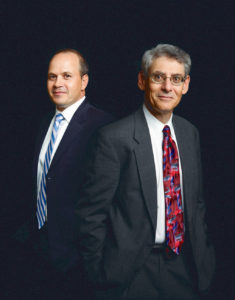Want one day to be nominated for an Edison Award? A good first step is to brush up on intellectual-property and patent law.

Don’t want to be like Harvey Ball? Intellectual-property knowledge is more important than ever, particularly as dentists — such as the Edison Award nominees we profile in this issue — come up with the ideas and invent the devices that will help push the profession forward in the years ahead. To get a sense of some of the parameters, we spoke with noted patent, trademark and copyright lawyer Ruy Garcia-Zamor, whose eponymous intellectual-property firm is based in Clarksville, Maryland.
Crafton and Kaufman: Let’s start with the basics. Is it safe for dentists to use photographs on their practice Web sites that they’ve found on the Internet?
Garcia-Zamor: Only if the rights to the image are expressly licensed to the dentist for commercial use. Unauthorized use can subject your practice to significant damages. If the image’s owner has obtained copyright registration, he can be awarded statutory damages, a financial award set by law, [even] without showing that any detriment occurred from the unlicensed use. Be sure you have the right to use all photos, including those provided by Web-design companies.
Should dentists file for copyright protection for their own sites?
When you employ a site designer, it’s important to memorialize in writing that any copyrights in the resulting site are owned by you. Fortunately, even if you did not obtain a contract transferring all copyrights, you may still be the owner if the site is considered a “work for hire.” Unless the parties have expressly agreed otherwise in writing, the dentist will own all rights in the copyright.
When a dentist invests significant time, money and effort in developing a Web site, it makes sense to file a copyright registration. If a competitor then decides to copy the site’s layout, template or other creative portions, having a federal copyright may allow recovery of damages or force the competitor to change.
What steps should dentists with new-product ideas take to ensure that they don’t become the next Harvey Ball?
Whenever a dentist develops a new product, an improvement to an existing product or a new manufacturing process or machinery, it’s important to consider obtaining patent protection. The U.S. now has a first-to-file patent system. In the past, an inventor could be entitled to obtain patent rights even if another person first filed a patent application for the same invention, provided the inventor could establish an earlier date of invention and the “diligent reduction to practice” of the invention after, which culminated in the patent-application filing by the inventor.
This is no longer the way it works. Now, if someone else files a patent application for an invention before you do, that person is entitled to obtain patent rights even if you developed the invention before they filed their application. For this reason, it’s important to file a patent application as soon as possible.
For individuals or research groups that regularly develop multiple potential inventions, it can be advisable to regularly file provisional patent applications to provide themselves with a window of opportunity to determine which inventions they’ll subsequently pursue while simultaneously increasing the likelihood that potential patent rights are preserved.
“Patent protection can provide you with exclusive rights to practice your invention for a limited time. This provides a competitive advantage over other dentists, and can make it more costly for them to compete with you.”
Prior to disclosing developments to the public or to third parties, it’s advisable to have a “patentability” search, and written patentability opinion prepared, to determine whether your idea is likely patentable. Patent protection can provide you with the exclusive rights to practice your invention for a limited time. This provides you with a competitive advantage over other dentists, and can make it more costly for them to compete with you.
After you consider the results of the patentability search and written opinion, the next step is to determine whether the potential amount of patent protection for your invention justifies preparing U.S. patent applications.
Patents can generally be divided between “utility patents” and “design patents.” Utility patents are used to protect how something works — its structure and core concept. Design patents are used to protect how something looks. Depending on the nature of the invention, one or both patent applications may be appropriate.
The patent-application process begins when an application is filed. Examiners at the U.S. Patent and Trademark Office (USPTO) read the application and search the USPTO database for similar patents in the United States; they may occasionally search limited foreign-patent databases. The examiner then prepares an “office action,” an initial report concerning the patentability of the invention. The office action includes arguments and identifies supporting documents that may raise patentability issues. The inventor will need to address these issues in a reply to the office action. Once the examiner is satisfied that no issues remain that bar patentability, he’ll issue a “notice of allowance.” The inventor then pays required fees and will be issued a patent about two or three months later.
The bottom line: If you have a hot new idea, get the patent work done properly, and right away. Far better to be a Steve Jobs (or a Thomas Edison), after all, than a Harvey Ball.
STEPHEN KAUFMAN, Esq., is chair of the Health Care Group at the Wright, Constable & Skeen law firm, serving doctors throughout the country. B. CASEY CRAFTON, DDS, Esq., is a practicing
dentist and a lawyer. Submit queries to skaufman@wcslaw.com. Ruy Garcia-Zamor can be reached at ruy@garcia-zamor.com.



